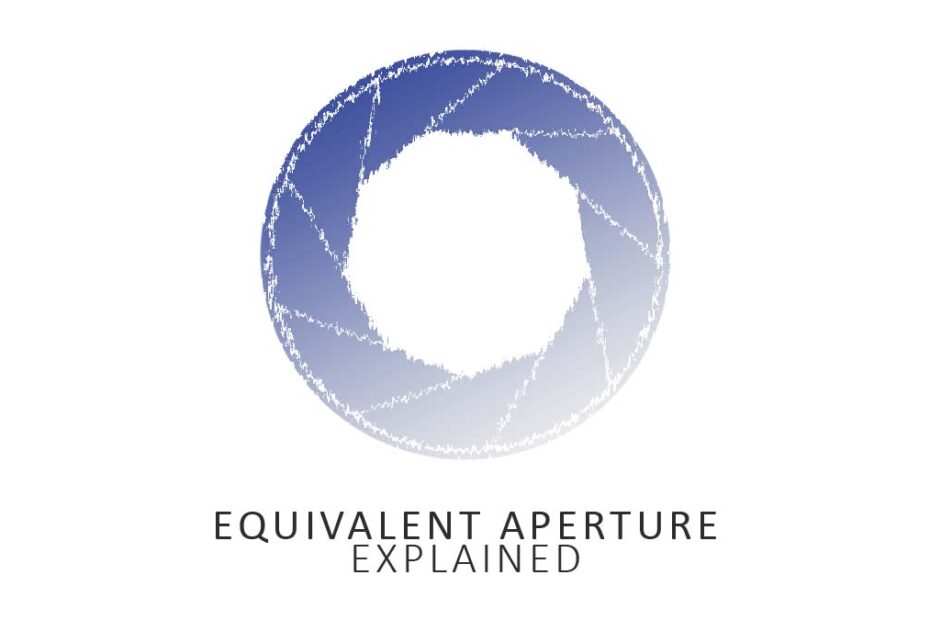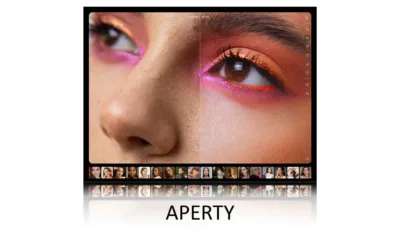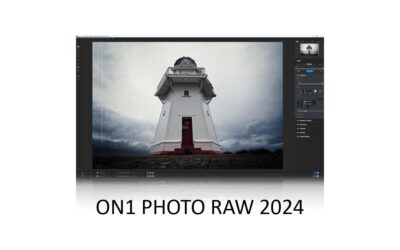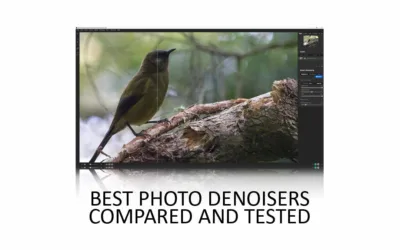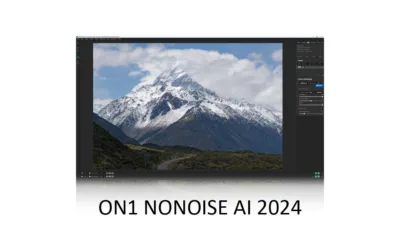Equivalent Aperture in photography is used to compare the light-gathering and backgrounding capability of similar lenses attached to different camera systems. Thus, Equivalent Aperture can be an essential factor when choosing your next camera or lens.
However, Equivalent Aperture is a commonly misunderstood topic that can be difficult to grasp. Therefore, this post attempts to explain equivalent aperture, its myths, and why its important. So, here goes. Jump to Conclusion.
Equivalent Aperture Explained – Contents
- Before you Start Reading
- Equivalent Aperture for Exposure Explained
- Equivalent Aperture for Depth of Field Explained
- Useful Charts
- Conclusion
Before you Start Reading
If you are new to photography, welcome. However, you may struggle with some of the terminology and concepts within this post.
Therefore, you might prefer to dip your toes with these articles first. But, if you thrive at the deep end, enjoy the article.
Equivalent Aperture for Exposure Explained
Equivalent Aperture enables you to compare the overall light-gathering capacity of two different camera-lens combinations. For instance, let’s compare the amount of light gathered by these two combinations.
- Micro Four Thirds Camera + F2 Lens
- Full Frame Camera + F2 Lens
The first thing we can see is that both cameras use F2 lenses. This means that both lenses shower their sensors with equal light density (brightness). However, the Full Frame sensor is four times larger, and its lens must project an image sized to match.
In other words, the image projected by the Full Frame F2 lens is no brighter than that projected by the Micro Four Thirds F2 lens. But the image is four times larger.
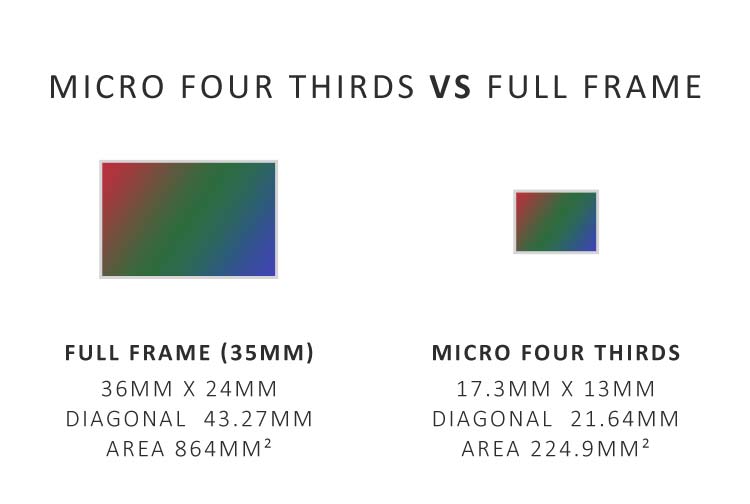
As a result, the four-times larger Full Frame sensor receives four times the quantity of light. This means the Full Frame sensor, in photography terminology – has a two-stop advantage, which typically results in superior image quality. Read What are Stops in Photography.
However, this also means that comparing two camera systems’ light-gathering potential cannot be assessed on aperture alone. After all, both cameras use an F2 lens, but the Full-Frame camera gets four times the light.
Thus, for the sake of an accurate comparison of overall light-gathering potential, we must balance the books. Specifically, we must subtract two stops of brightness from the Micro Four Third’s F2 lens’s aperture.
How to Calculate Equivalent Aperture for Exposure
Using a crop factor, you can calculate the equivalent aperture of two camera systems. The crop factor is determined by dividing the diagonal length of one sensor by the other. However, I’m happy to save you the trouble and present you with this chart instead.
| Sensor Size | Full Frame Equivalent Crop Factor |
|---|---|
| Medium Format (Fuji) | 0.66x |
| Full Frame | 1x |
| APS-C | 1.53x |
| APS-C (Canon) | 1.63x |
| Micro Four Thirds | 2x |
In the case of Micro Four Thirds and Full Frame, the crop factor is 2. Therefore, we can calculate the Full Frame equivalent aperture of any Micro Four Thirds lens by multiplying its actual aperture by 2. Therefore, an F2 lens on Micro Four Thirds is equivalent to an F4 lens on Full Frame. Download Crop Factor Chart.
Below are all common apertures and their Full Frame equivalent apertures for Micro Four Thirds. For more, download this Equivalent Aperture Chart.
| Full Frame Aperture | Full Frame > MFT Crop Factor | MFT Equivalent Aperture |
|---|---|---|
| F1.4 | x2 | F2.8 |
| F2 | x2 | F4 |
| F2.8 | x2 | F5.6 |
| F4 | x2 | F8 |
| F5.6 | x2 | F11.2 |
| F8 | x2 | F16 |
| F11 | x2 | F22 |
| F16 | x2 | F32 |
| F22 | x2 | F44 |
Why Equivalent Aperture for Exposure matters
In practical terms, not all F2 lenses are equal. Thus, if you’re wondering why a Micro Four Thirds F2.8 zoom is so much cheaper and smaller than an F2.8 zoom for Full Frame – it’s because the full-frame lens on a Full Frame camera will pass four times more light. And the result can be superior image quality.
Myth Bust
None of this is to say that an F2 Micro Four Thirds lens is not an actual F2 lens. On the contrary, it is a true F2 lens, both mechanically and practically. Specifically, an F2 Micro Four Thirds lens provides the same light density (brightness) as a Full Full frame F2 lens.
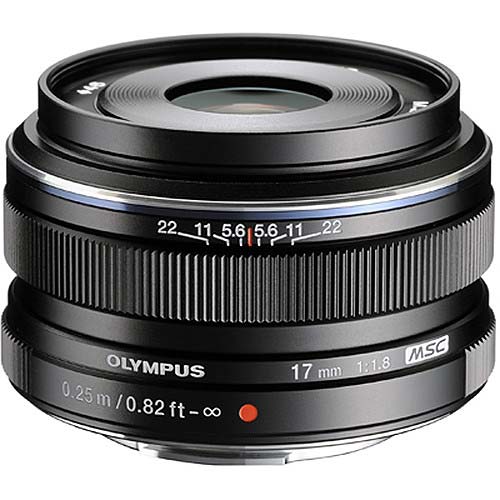
But while both lenses are equally bright, the Full Frame lens projects a larger image circle to match the four times larger sensor. As a result, both lenses are similarly bright, but the Full Frame lens passed four times the light volume.
Equivalent Aperture for Depth of Field Explained
Aperture influences depth of field. Specifically, larger apertures are better able to blur backgrounds than smaller apertures. This tells us that a 25mm F2 lens can produce the same amount of blur regardless of camera or sensor size.
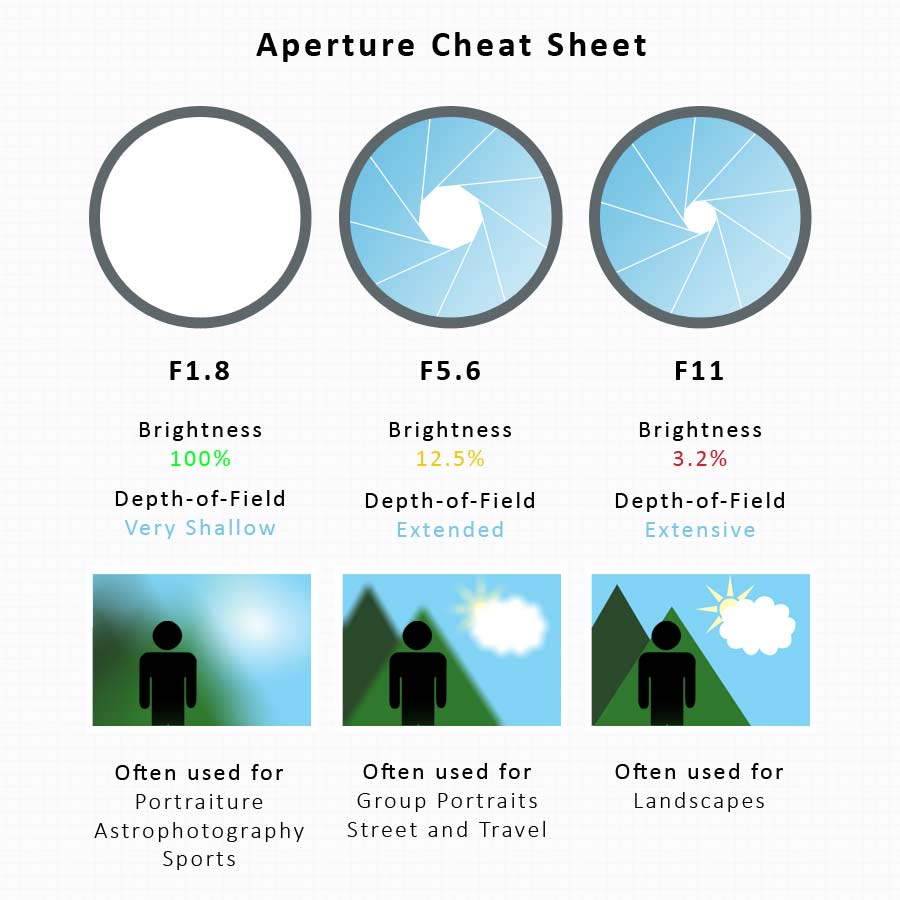
The second factor influencing depth-of-field is focal length, with longer focal lengths, such as 200mm, producing a shallower depth of field than smaller focal lengths, such as 50mm.
This is important because larger sensor cameras must use longer focal lengths to achieve the same angle of view as a short focal length on a small sensor.
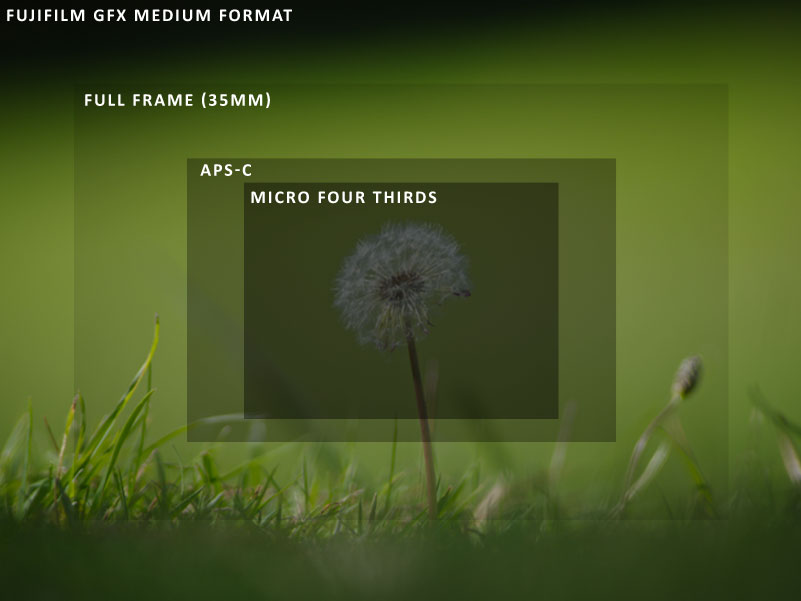
For example, a 25mm lens on a Micro Four Thirds camera presents a 47-degree angle of view. However, a Full-Frame camera would need a 50mm lens to do the same thing. This means two things.
First, cameras with large sensors need large lenses. And second, cameras with larger sensors achieve shallower field depth because they use longer focal lengths.
So while a 25mm F1.8 Micro Four Thirds lens and a 50mm F1.8 lens produce a similar 47-degree angle of view, the 50mm has better background blur thanks to its longer focal length.
Thus, the only way the 25mm Micro Four Thirds lens can keep up with a 50mm lens is to have an even larger aperture. So, what aperture would that be?
How to Calculate Equivalent Aperture for Depth of Field
Calculating an Equivalent Aperture for depth of field is the same as calculating an equivalent aperture for exposure (see above). Namely, multiply the Micro Four Third’s physical aperture by the Full Frame – Micro Four Thirds crop factor of 2.

Thus we can determine that the depth-of-field of a 25mm F2 Micro Four Thirds lens is equivalent to a 50mm F4 lens. Alternatively, we can divide the F2 aperture by 2 to determine that we’d need a 25mm F1 lens to match the shallow depth of field of a Full Frame 50mm F2 lens.
Why is Equivalent Aperture for Depth of Field important
Knowing that a 25mm Micro Four Thirds lens cannot match a 50mm Full Frame lens at the same aperture is essential if you are looking for heavier background blur. This may lead you to buy a different camera system or choose a more expensive Micro Four Thirds F1.2 lens over the vanilla F1.8.

On the other hand, if you don’t want background blur – understanding Equivalent Aperture may help you decide that Micro Four Thirds offers you the apertures you need in a much smaller, lighter, and cheaper package. Read Micro Four Thirds vs Full Frame.

It’s important to say that no system is inherently better than the other, and you should buy the system that best suits your photography style. And to that end, understanding Equivalent Aperture is hugely beneficial.
Myth Bust
Technically, sensor size does not influence depth of field and background blur. For instance, if you mount the same Nikon 50mm F1.8 lens on an APS-C and Full Frame DSLR, the angle of view will change, but the depth of field does not.
However, a larger sensor will force you towards longer focal lengths, influencing the depth of field. Therefore, it’s entirely practical, if not technically accurate, to say bigger sensors have better background blur.
Useful Charts
Crop Factor Chart
Crop Factors for APS-C, Micro Four Thirds, Full Frame, Medium Format, and more. Download Crop Factor Chart.
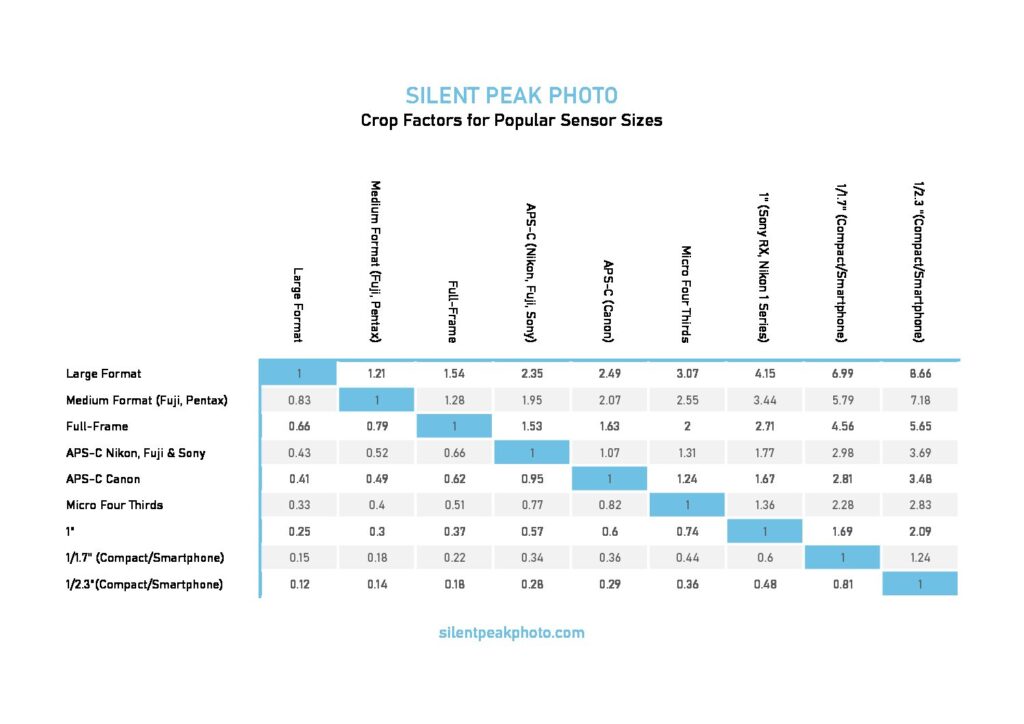
Full Frame Equivalent Chart
Lists Full Frame Equivalent Apertures for APS-C, Micro Four Thirds, and more. Download Equivalent Aperture Chart.
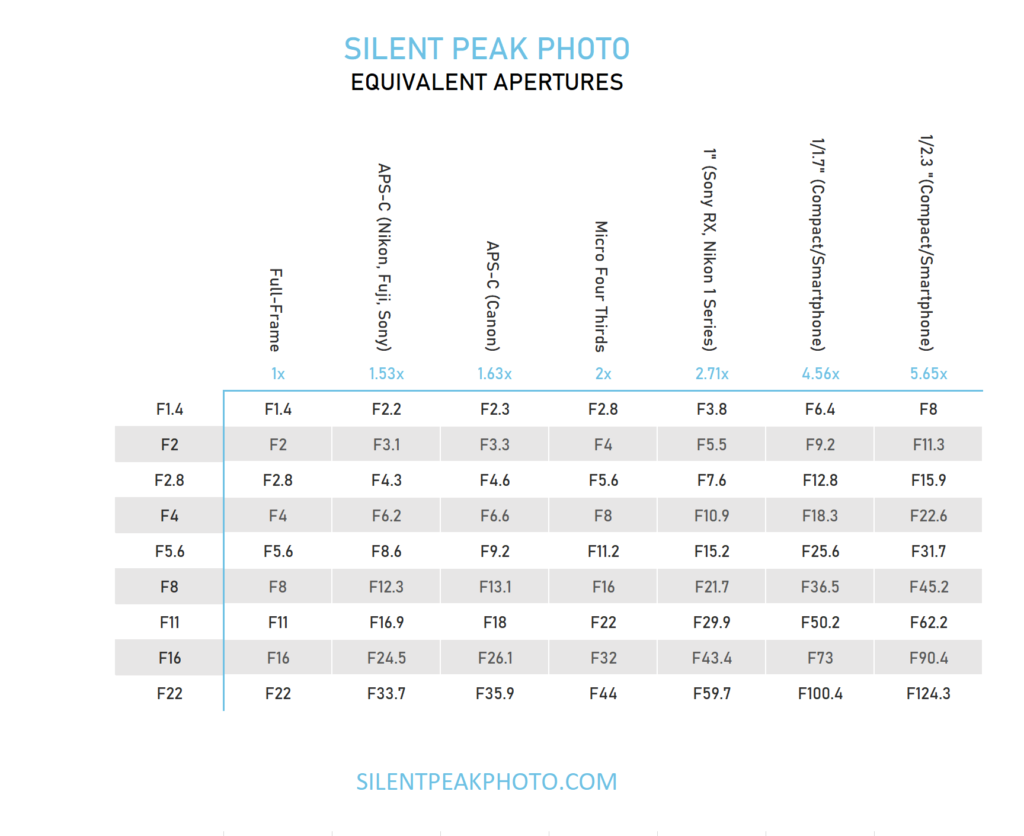
Get Discounts on Photo Editing Software
Subscribe to my weekly newsletter and be notified of deals and discounts on photography software from ON1, Adobe, Luminar, and more. Spam Promise: Just one email a week, and there’s an unsubscribe link on every email.
Conclusion
An equivalent Aperture is used to compare the light-gathering and depth-of-field properties of two different Camera and Lens combinations.
Light Gathering
For instance, a Micro Four Thirds F2 lens is just as bright as a Full Frame F2 lens. However, the image projected by a Full Frame lens is four times larger, meaning the Full Frame camera receives four times as much light. As a result, we cannot compare both of these camera systems using aperture alone.
Instead, we can take the Full Frame camera’s four-fold light-gathering advantage and subtract it from the Micro Four Thirds F2 Lens. This means that a Micro Four Thirds camera with an F2 lens will capture the same amount of light as Full Frame with a four-times darker F4 lens. In other words, Equivalent Aperture is a means to balance the books.
Depth of Field
An equivalent Aperture is also used to compare the depth of field. Although Sensor size does not influence the depth of field directly, focal length does.
So while a Micro Four Thirds camera needs a 25mm lens to produce a 47-degree angle of view, a Full Frame camera needs a 50mm. And because 50mm is a longer focal length, it has a shallower depth of field compared to the Micro Four Third’s shorter 25mm lens.
Thus, to balance the books, we subtract the Full Frame camera’s 2-stop advantage to determine that the depth of field of Micro Four Thirds 25mm F2 lens is similarly shallow to a 50mm F4 lens on Full Frame.
Through all of this, none of the physical properties of the lens change. In other words, the Micro Four Thirds 25mm F2 lens is still, technically and practically, a 25mm F2 lens. But it cannot be directly compared with another camera system with a smaller or larger sensor.
Summary
By understanding Equivalent aperture, you can appreciate differences between seemingly similar lenses. For instance, if you want lots of background blur, Equivalent Aperture tells you that cameras with smaller sensors are at a disadvantage.
But you also might decide that a small sensor camera gives you the Equivalent Apertures you need for your kind of photography, albeit in a smaller, lighter, and cheaper package.
Either way, by understanding Equivalent Aperture, you will be better able to buy the equipment that best meets your photography needs.
One more thing.
If you liked this post, subscribe to my weekly newsletter. In return, you’ll be notified of the latest deals and discounts on photography software and gear. Plus, no more than one email per week, and you can unsubscribe anytime.
